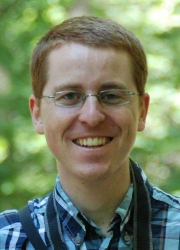Simon E. Nigg
Contact
|

|
Research Interests
- Quantum information processing with superconducting circuits
- Mesoscopic electron transport
- Machine learning and physics of information
Curriculum Vitae (CV)
- 2016-2017: Research assistant, University of Basel, (CH)
- 2013-2016: SNF Ambizione fellow in the Condensed Matter Theory department at University of Basel, (CH)
- 2010-2013: Postdoctoral fellow in the physics department at Yale University, CT (USA)
- 2005-2010: Graduate studies in the physics department at University of Geneva, (CH)
- 2004-2005: Diploma work at the Max Planck Institute for Quantum Optics in Garching, (GE)
- 2000-2004: Studies of physics at Technische Universitaet Muenchen, (GE)
